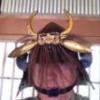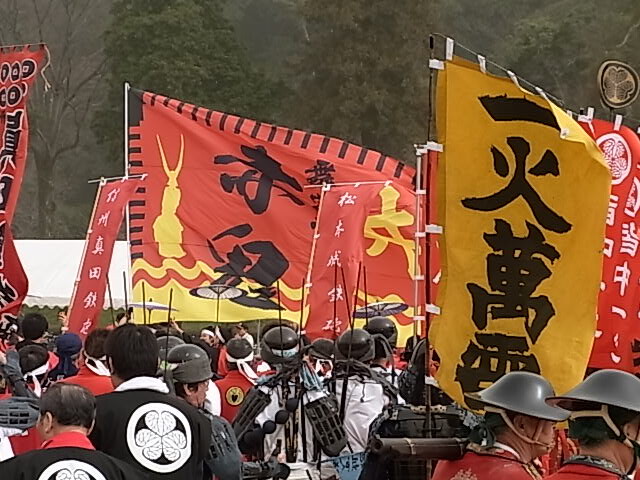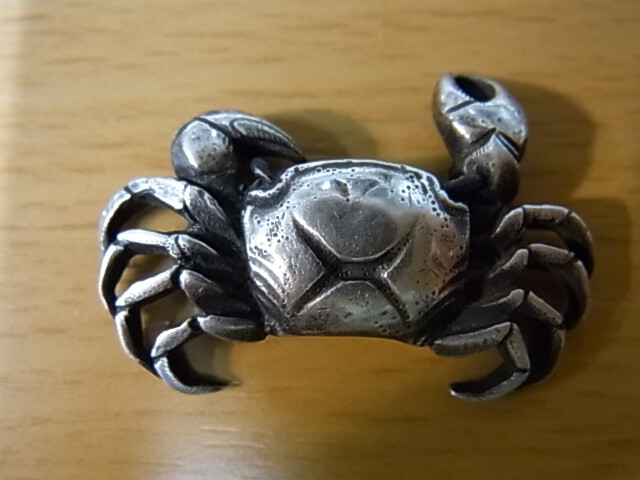-
Posts
13,810 -
Joined
-
Last visited
-
Days Won
250
Content Type
Profiles
Forums
Events
Store
Downloads
Gallery
Everything posted by Bugyotsuji
-

This Week's Edo Period Corner
Bugyotsuji replied to Bugyotsuji's topic in General Nihonto Related Discussion
Piers, just post them on Samurai Archives. Emmanuel is not the only one that would love to see them ... Is there an invisible wall against outsiders? No-one bothers to answer or acknowledge my posts, so I have kind of given up commenting. I posted a correction to someone's misinformation the other day, but was completely ignored. You and John seem to be the only 'friendly' people over there. (Probably overstated the case a bit! :lol: ) -

This Week's Edo Period Corner
Bugyotsuji replied to Bugyotsuji's topic in General Nihonto Related Discussion
One has to be terribly careful with unusual Japanese guns (eg three-barrelled guns) as the very high prices assures that there will be many fakes around. People will pay top dollar just on the off-chance that this one could be genuine, when in many cases the provenance is just not there. A close friend likes to assure me that there are only 'three' (pick your figure) known and verified examples in the world. To show how far he knows the market, I told him that there was one in the Royal Armouries in Leeds, and he said, 'I bet it had vines on the barrel' and he was right. Just shows how well he has researched them. Back to the purpose of this post, to update the thread, I was in Hikone this weekend for a gathering of the clans. A bitter wind and driving rain did not deter everyone from a magnificent display, not least of which was the various Sengoku banners and Uma-jirushi. I bet John's friend Evalerio would have been happy to see them. I was astonished to see one group with large silver crosses hanging on their breast plates and asked if I could take a photo. They explained that they were from Bungo, and their Lord Ootomo Sorin 1530-1587 was a prominent Christian Daimyo. I will post up a few low density pictures from the day, if Brian can overlook the bandwidth creep. Hikone Castle with its complete concentric moats and many remaining original features is worth a visit alone if anyone has not yet been. -

An Early Japanese Cannon
Bugyotsuji replied to watsonmil's topic in General Nihonto Related Discussion
One quick question, Ron. Is it possible in your mind that the gun was hit hard (by enemy fire or an explosion etc.) from the side, and the repairs were for deepish gouges in the exterior of the barrel? -

An Early Japanese Cannon
Bugyotsuji replied to watsonmil's topic in General Nihonto Related Discussion
Thank you for showing that, and giving us the very interesting cover story! So, calibration of the cannon was done by eye, much like a hand gun, but with a handy coil of rope. Dead easy once you get your eye in, I should imagine, and fine for short range work. -
Oh, thank you so much all of you. (And John, I never suspected that you were born on the bosom of a poetess!!! )
-
This has been up for a few days and there have been no comments. This means that the Japanese is difficult to read, and no-one can advance the state of play, even one letter? I was doubting the reading in a couple of places, but cannot offer anything better. If this is the case I will go back to my friend and say we here can take this no further. Thank you all for looking, anyway! Oh, and now I can attempt my own translation! :D Hmmm.... first attempt, here we go! Fell fast asleep drunk It's been a while since I dreamed That inn full of blooms
-

This Week's Edo Period Corner
Bugyotsuji replied to Bugyotsuji's topic in General Nihonto Related Discussion
Unfortunately I am pretty sure the one posted above is a modern Chinese reproduction. I think I know who has been selling this piece too. -
Friend in Switzerland asked me to check this carved Haiku; YOUTE NETA Endormi d'ivresse Sleepy with drunkenness YUME MO NATSUKASHI je fais un reve qui m'est cher; I have a dream that I hold dear HANA NO YADO ma maison est en fleurs my house is in bloom Someone has already attempted to do the translation, as you can see above. What I would like is for someone to check whether the original Japanese is correctly transcribed from Kanji/Hiragana to Roma-ji before we think about any possible English rendition. Thanks in advance.
-
Note the lock plate shape, the use of a brass band instead of mekugi pins, the elongated teardrop trigger, and unusually large trigger guard, and consider Mino Seki-ryu and Yonezawa guns when categorizing your pistol. http://www.xn--u9j370humdba539qcybpym.j ... /minou.jpg http://www.xn--u9j370humdba539qcybpym.j ... nezawa.jpg The bamboo serpentine pins and box are a fascinating feature which I have never seen before, but which would be extremely useful. Now I can see another reason for the holes in the serpentine pinch leaves. The oval lanyard 'udenuki no kan' hole in the stock indicates by conventional wisdom that this is a cavalry pistol (bajo-zutsu) which once dropped from horseback would be impossible to retrieve without a cord. (As distinct from a regular carrying pistol, or tan-zutsu.) But I have seen mixed examples, so there seem to be just as many exceptions to this rule of thumb. As Lorenzo said above, a closeup picture of the box functions would be very interesting.
-
Good luck with that. I've not done it myself yet, but would you not need a notaried translation? Otherwise, from their point of view, how do customs know that the translation is accurate? Forgive me if this has been discussed elsewhere...
-
Koichi san, many thanks. I never fail to learn something from you. So Ian, in L7 include the word 'Preservation' before Society! Completely missed it out! Please adjust according to Koichi san's recommendations.
-
L4: Migi wa to-kyoukai ni oite shinsa no kekka tokubetsu hozon to-ken to L5: kanteishite, kore wo sho suru = The object described on the right is judged a blade worthy of special preservation, and this we certify. L6: Heisei 13, shigatsu itsuka= 5 April 2001 L7: Zaidan Hojin NihonBijutsu To-ken Kyokai = Foundation name. Japan Fine Art Swords Association (If there are any mistakes in the above, I hope someone will step in and correct them. Thank you.)
-
Line one on the right says: Kantei-sho = Evaluation Certificate Line two says: Nagasa ni-shaku ni sun go-bu kyo = Length 2 Shaku, Two Sun & just over 5 Bu Line 3 says: Ichi. Tachi. Mei, Shigenaga (Osafune. Jidai: Nanboku-cho makki Oyobi? itaru? O-ei) = Item. Tachi. Signature Shigenaga (Osafune. Age: End *Namboku Dynasty or? up to? **O-ei) *Nanboku Cho 1336-1392 **O-ei 1394-1428
-

New Kantei Nyusatsu Handbook
Bugyotsuji replied to Clive Sinclaire's topic in General Nihonto Related Discussion
Just arrived back in the UK last night to find it waiting for me. A very handy little thing which I shall be sure to carry from now on. -
Fascinating area , I agree.
-

This Week's Edo Period Corner
Bugyotsuji replied to Bugyotsuji's topic in General Nihonto Related Discussion
Agreed. A fantastic mysterious objet d'art. You don't need to do anything to it! No responsibility, just enjoy! -
Xin Nian Hao!
-
Reading, or translation? Translation would be
-
Looks like
-

This Week's Edo Period Corner
Bugyotsuji replied to Bugyotsuji's topic in General Nihonto Related Discussion
-

This Week's Edo Period Corner
Bugyotsuji replied to Bugyotsuji's topic in General Nihonto Related Discussion
Yes, to Koichi san and Malcolm on the Shakujo. As you can see in Kochi san's excellent link, the Shakujo could double as a weapon. The one in the photo just happens to be sitting on a convenient Zeni-bako. Apologies for the distraction! It looks pretty boring at first glance, but what is interesting about this one is that it is iron and not the usual brass. The lacquered handle is about the length of the Tsuka of a Tanto, and the metalwork is set on a Nakago which is locked into the handle with a wooden Mekugi pin. There are twelve rings. All of the wirework frame, starting from the solid inverted head at the pyramid top, ending in the Nakago, is from one single strand, and had my metalworker friends puzzled as to its construction. The thing I like best is the smooth iron baffle plate. The ringing note is wonderfully pure. It is relatively thin at the mimi edges, but gradually grows thicker towards the central hole, producing this gorgeous sound, and leading me to suspect it might have been made by a Tsuba worker, :lol: more so as it is Kitae-teiru and about the size of a large Wakizashi tsuba. Most people who have seen it agree that it is old, and one respected friend said this evening that he is pretty sure it is mid-Edo at least. Whether it is a weapon or not, and whether it could parry a blow from a blade I do not know, but perhaps it could be used in self-defense, or in practise Tsuba-zeri-ai. The silver crab is probably the Tome-gu decoration from the flap of a tobacco pouch. The two patches underneath are where the clip could have been fixed until someone cut this loose from its original pouch and ground them off. (?) -

This Week's Edo Period Corner
Bugyotsuji replied to Bugyotsuji's topic in General Nihonto Related Discussion
Thanks Piers. If it re-appears, please let me know. Do you want to see it? -

This Week's Edo Period Corner
Bugyotsuji replied to Bugyotsuji's topic in General Nihonto Related Discussion
-
John. The right one is To-hachi Bishamon, 刀八毘沙門 used on Uesugi Kenshin's banners. There's a J Wiki page explaining it. I posted this info on another site in answer to Evalerio. See: http://images.google.co.jp/images?q=%E5 ... CCAQsAQwAw also http://ja.wikipedia.org/wiki/%E5%88%80% ... 0%E5%A4%A9 and: http://ja.wikipedia.org/wiki/%E6%AF%98% ... 0%E5%A4%A9
-
Apologies. To clarify, there are two sources that I use for the Mei on Teppo, neither of which are anywhere close to the plethora of books available for swords. Both are in Japanese. I have mentioned these on this site before, but just to update. The first is Sawada Taira's Nihon no Furuju/Kojuu 日本の古銃 which is perhaps the most reliable modern work on the age periods, regions, schools and Mei of guns, from the beginnings up to the end of the 19th c. Lots of fairly good photographs, mostly black and white. Osaka. 15,000 yen last I heard. The second is Ogasawara and Yasuda's 全国鉄砲鍛冶銘鑑... a set of two books covering all known and recorded Mei on Hinawa-ju. One book lists by region of Japan. The other lists all the Mei in Japanese alphabetical order. No pics, but some maps showing the Teppo Kaji locations. Black and white, Japanese. Out of print, so I have a photocopy of it. Very sought after, but rapidly becoming out of date and the author has been promising for some years to publish an updated version. Printed in 2001, at 3,000 JPY The latter is where I got the information in my post above.













